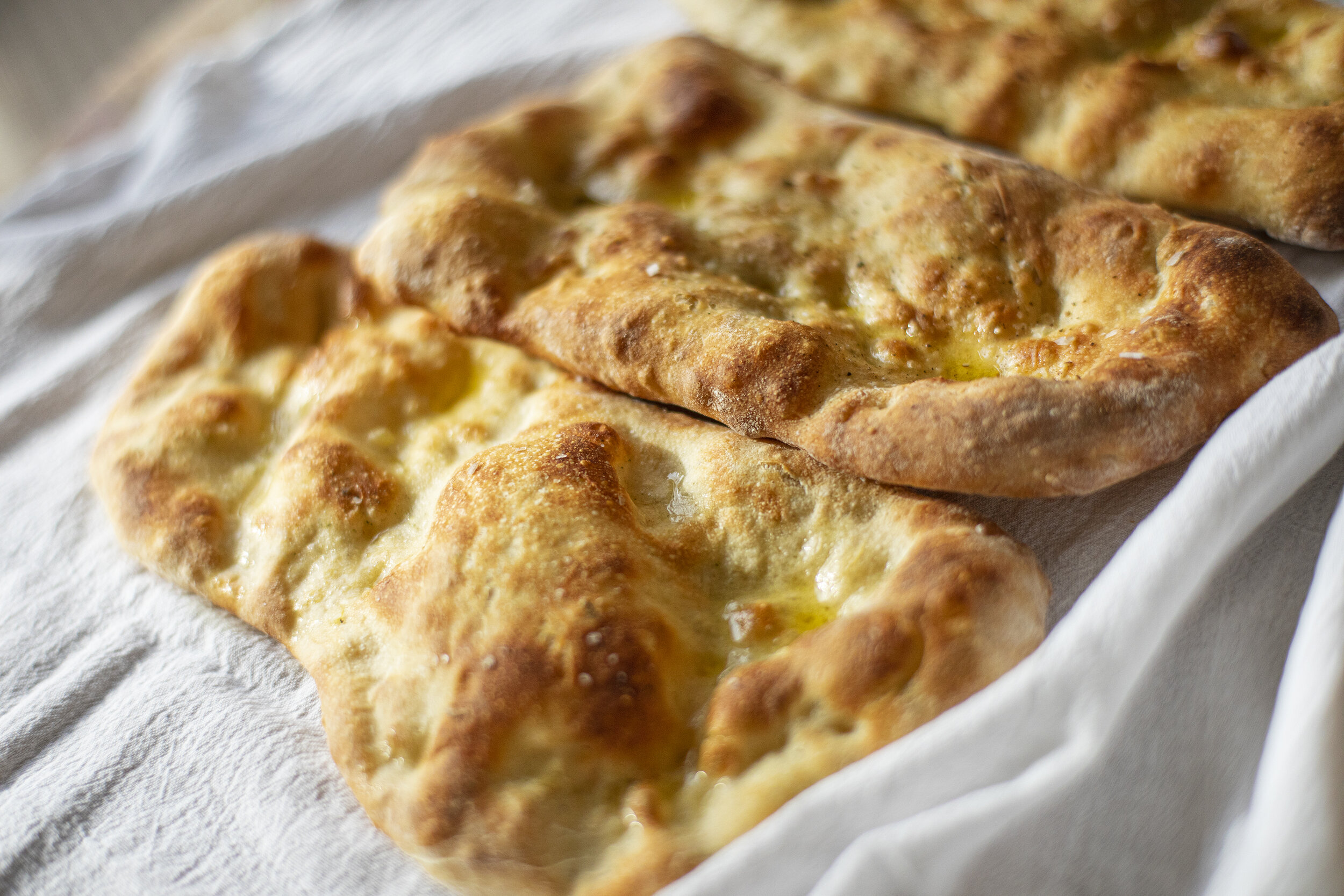Same-Day Sourdough Flatbread
The beauty of this recipe is how versatile it can be. Start it in the morning and you’ll have flatbread for dinner. It can be baked on a pizza stone, or straight in a buttered cast iron skillet. It can be spiced or left plain. The possibilities are really endless and it can conform to whatever meal your making.
The Dough
Morning (Around 7am):
Mix together 95g active starter, 2.25 cups all purpose flour, 1 cup warm water, .5 tsp salt and spices if you’re using them. For Indian style flatbread I use .5 tsp tumeric and .5 tsp cumin. Mix well, cover and leave out at room temperature all day.
Afternoon (Around 4pm):
Dust your work surface with flour. Dump out dough and divide into 5 equal balls. Do a quick stretch and fold of each ball to shape as if you were shaping pizza dough. Proof for another 20-30 mins.
On floured surface, one by one, press each ball of dough down with your fingers, gently pulling the edges so it flattens out to about .25 inch. The process is very similar to shaping pizza dough.
Baking in the Oven:
Heat your oven / pizza stone to 500F. Brush each dough with a little olive oil and sprinkle with salt. Using a pizza peel, slide in as many individual doughs as will fit. Bake for about ten minutes, until golden brown and puffy. This method will yield slightly puffier flatbread than the cast iron method.
Baked flatbreads with shakshouka.
Baking in a cast iron skillet:
Heat up cast iron pan and add a pat of butter for each flatbread you make. Lay down the flatbread in the hot pan and cook for about 5 minutes on each side until it begins to puff up and get blistered in the heat. Some char marks are welcomed here. Make sure to thoroughly clean out the skillet in between each piec
Skillet cooked flatbread, spiced with tumeric and cumin, dusted with ramp powder.












































